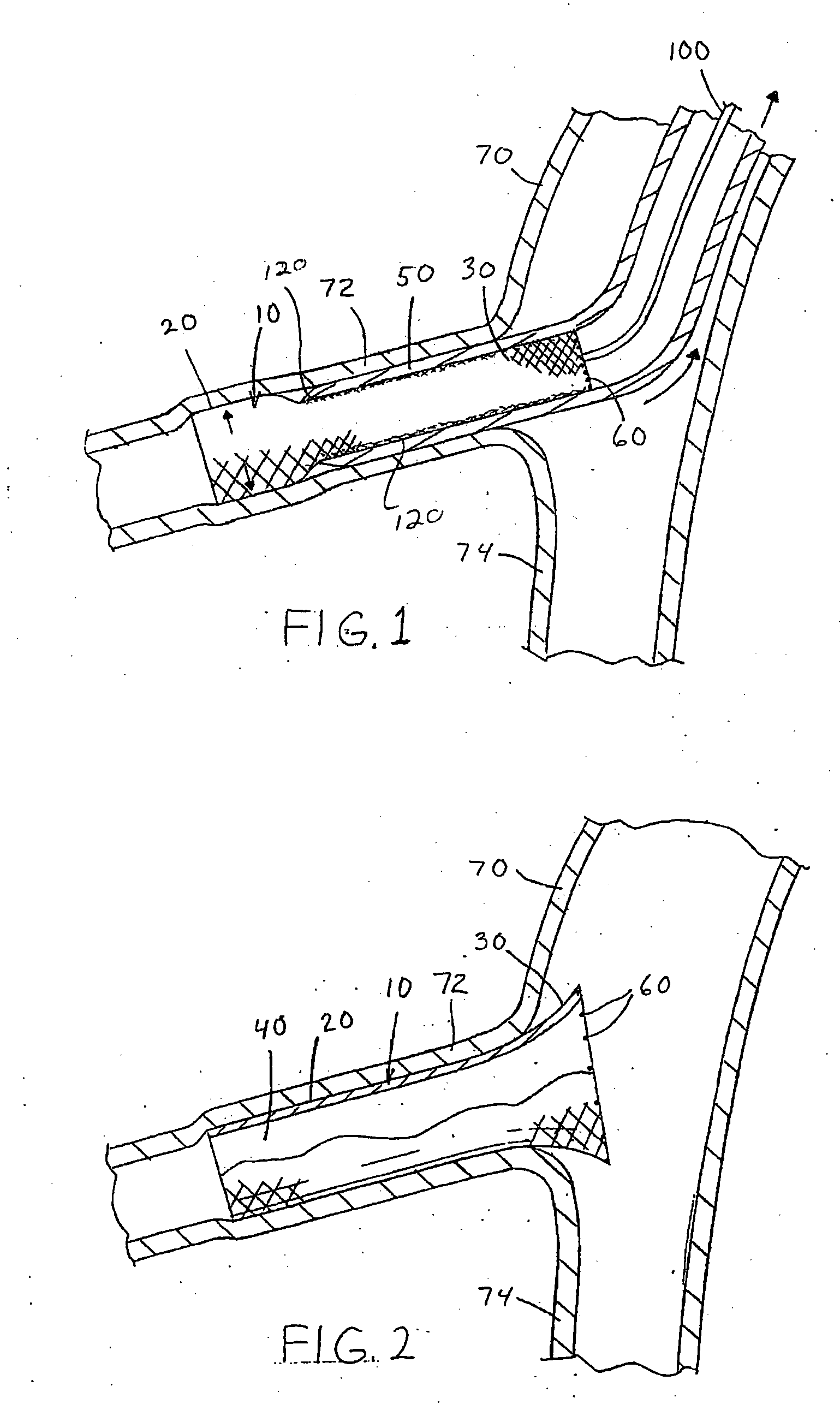Medical adhesive for medical devices
- Summary
- Abstract
- Description
- Claims
- Application Information
AI Technical Summary
Benefits of technology
Problems solved by technology
Method used
Image
Examples
Embodiment Construction
[0029] Referring now to the drawings wherein the showings are for the purpose of illustrating the preferred embodiment only and not for the purpose of limiting the same, FIGS. 1-2 illustrate two non-limiting applications of the medical adhesive of the present invention. The figures illustrate the use of the medical adhesive in conjunction with a particular type of vascular stent 10. As can be appreciated, the medical adhesive can be used with other type of vascular stents and / or other types of medical devices.
[0030] As best illustrated in FIGS. 2 and 4, the vascular stent 10 includes an expandable body section 20 and a flaring section 30. The body section 20 has a generally uniform tubular shape along the longitudinal axis of the vascular stent; however, will be appreciated that the body section can have other shapes. The body section has a generally constant diameter in the expanded state; however, this is not required. Typically, the body section has a generally uniform tubular s...
PUM
 Login to View More
Login to View More Abstract
Description
Claims
Application Information
 Login to View More
Login to View More - R&D
- Intellectual Property
- Life Sciences
- Materials
- Tech Scout
- Unparalleled Data Quality
- Higher Quality Content
- 60% Fewer Hallucinations
Browse by: Latest US Patents, China's latest patents, Technical Efficacy Thesaurus, Application Domain, Technology Topic, Popular Technical Reports.
© 2025 PatSnap. All rights reserved.Legal|Privacy policy|Modern Slavery Act Transparency Statement|Sitemap|About US| Contact US: help@patsnap.com



